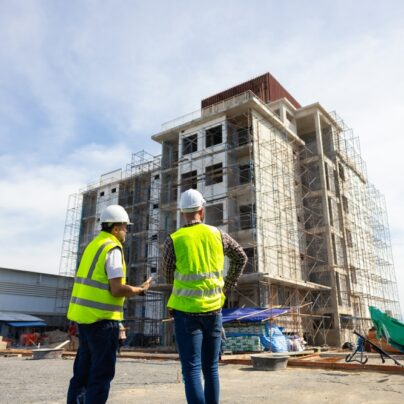The ‘Green Deal’ is the governments attempt to get the construction industry back on it’s feet, relieve the unemployment figures, and create a new industry micro-cosm in associated manufacturing, administration and implementation. All of this as a by-product of the Uk’s unswerving commitment to the world to reduce it’s carbon emissions by 80% by the year 2050.
There are few people who can accurately look 40 years ahead, so I guess we are stuck with trying to do as much as we can, as far in advance as we can. In the hope that it all might just come together at about the right time. To the government’s credit they are not hanging around, and the Green Deal has got to be a committed and positive move in the right direction.
Will it work?
The Green Deal is wrapped up as part of the governments ‘Energy Bill’, which is described as being “designed to provide for a step change in the provision of energy efficiency measures to homes and businesses, and make improvements to our framework to enable and secure, low-carbon energy supplies and fair competition in the energy markets.” There, so now you know.
One of the forerunners to the Green Deal was, still is, and will continue to be the “Feed in Tariff” (FiT). Now if governments were ever prone to admitting fiscal errors this would be high upon the list. They started a scheme in July 2009 allowing businesses and private individuals to apply to be paid to generate renewable energy – Primarily electricity from Photo voltaics and wind turbines. But the offer was too good! Not only can you use the electricity generated by your renewable installation, but the government will also pay you to do so. How fantastic is that? – It was the payment level though that was too high. Very, very attractive. But too high, and unsustainable.
So they are lowering the rate by just over 50%. Down from 43.3p per Kwh to 21p, with a proposal to implement starting 8 December 2011. This of course is contrary to the previous rumours that it might be 1 April 2012. – What fools we were to believe that! This strategy only applies to energy production via photo-voltaics. The argument being that the FiT has been so successful in bringing down the cost of PV installations (reported at up to 30%) that the original projected figures are now too high, and need to be reigned in. Yeah right. The bottom line is it’s not going to be as lucrative as it used to be. But the government is still hoping the attraction will be there.
So the FiT reduction is just a glitch in the Green Deal matrix. The move to empower an industry with everything it needs to reduce the country’s carbon footprints marches relentlessly onward, like some android army under the Generalship of the Secretary of state of energy and climate change, Chris Huhne.
So what is General Huhne promising?
He might say he’s promising nothing, but he’s looking to achieve an affordable, manageable, sustainable and effective solution to ease the consumption of energy within the UK. – Good answer. It might not be his, but nonetheless, a good answer.
How will this be achieved?
The principles of the Green Deal are now fairly well known. The starting premise is that the UK housing and general building stock is now so old, and so poor at efficiently managing energy consumption that it is responsible for around 25% of the Uk’s carbon emissions. The Green Deal will allow the affordable retrofit and upgrade of our buildings to become more energy efficient, and reduce overall carbon emissions as a consequence. So that’s it in a nutshell. Not too difficult at all.
How will the Green Deal be rolled out?
The claim is that the manner in which the proposals have been drafted mean that the implementation will not be on a one size fits all basis. The scheme has built in flexibility that will give “businesses and consumers the opportunity to make the energy efficiency improvements that best suit their situation.” Seems viable on the face of it. It is the words “their situation” that will be the governing factor. For there will be a formula to be applied to each property. You may have heard of this as ‘The Golden Rule’. The golden rule states that the financial savings realised as a result of any energy saving measures must be greater than or at least equal to the capital cost of installation.
The Department of Energy and Climate Change (DECC) promotes the golden rule as protection to the building owner, or occupier. The capital cost of the work will be borne by the energy provider for that property. The theory being that the new energy efficient installation will reduce the energy used by that building, and therefore the associated energy bill cost pro-rata. This creates an opportunity for the energy provider to recover the cost of the installation, over time, by making a charge to the consumer of a maximum of the difference between their monthly bill cost before the measures and the projected reduced cost afterwards. So the consumer’s bills will largely stay the same, but they will be using less energy.
You might ask what’s stopping the energy providers charging what they like for any given ‘energy saving’ installation? And that would be a very good question. The answer, on the face of it, is nothing. Nothing at all. But what we should find is that it will be self-regulating. The energy providers will be under government pressure to achieve a significant number of installations. Each installation will have a prescriptive pay back period. A finite amount of time during which the whole installation cost must be recoverable by the savings it has generated. This is the ‘Golden Rule’ and of course is a ‘deal breaker’ if the installation and pay back figures fail to stack up.
So what happens at the end of that period then? In practice it is hoped the energy saving installation will continue to ‘save money’. Chances are that after say ten, fifteen or even twenty years technology will have overtaken the performance of the PV installation that was commissioned in 2012, such that, for example, in 2030, if PV panels still exist, their efficiency rating will be off the scale compared to today’s technology. You can easily make the comparison with a computer bought today, will almost certainly have been superseded in 6 months time by a model that is smaller, faster and has more memory; all for less money. The counter argument being that if you don’t take advantage of today’s technology TODAY, you will miss out on the benefits offered tomorrow, and the day after. But that is the current way of the world.
Your energy use goes down, but your bill remains the same – So what’s in it for me?
You are not paying any less each month, so YOU are not going to SAVE money by having all this disruption to your home, and, or business then why bother? – On the face of it I think that’s a perfectly reasonable response and reaction. Except we should all have our eye on the ‘energy ball’. We have a duty to the world we live in, our children, their children and so on. So taking the glass half full approach, this is the perfect opportunity to make it work for us at no cost. Short-term disruption to our living and working environments is the price we pay. But is your average man on the street so altruistic? Or, Is he just plain selfish? Will the energy providers need to guarantee some form of saving to incentivise the roll out? I think so. The cynic in me says that people will not budge to save the planet if all they are doing is standing still, because after all W.I.I.F.M. is a very powerful lobby.
How do we get our energy saving measures installed?
Initially there will be a massive media promotion of the Green Deal by both government and energy providers. This is currently scheduled to be rolled out around autumn 2012. Then it is up to you and me to ask whether we are able to qualify for what’s on offer. This could be anything from simple loft insulation, to Biomass boilers, to PV panels and wind turbines. But not every building will be suitable for all that will be on offer. Even if it is, if the capital cost cannot be repaid during the projected ‘pay-back’ period – again that particular horse will be deemed to have fallen at the first fence. However, the energy companies will be under substantial government pressure to make this work for as many applicants as they can. Even if it means bending over backwards. Please get in an orderly queue behind me because I would like to see that first.
Accredited Assessment and Installation
Once we have decided that we want a slice of the Green Deal cake we must invite an assessment of our building by someone trained and qualified to do so. How many times have the public been stung by inexperienced, poorly trained, so-called advisors who plainly didn’t realise the difference between A and E? Why should it be any different this time? Well General Huhne has stated, ” We are working with industry and accreditation bodies to ensure the assessment is robust, delivered to agreed standards by qualified advisers and backed up quality assurance and compliance mechanisms.” Believe that if you want to. We shall find out in due course.
Likewise, installers trained to understand what they are doing will only carry out the installation. Call me an old cynic, but experience shows that consistency on this will build it’s own mountain, and many so called accredited installers will run out of oxygen long before they reach the top. If only because not all the installation team will understand the science of what they are trying to achieve. However, ‘accreditation means that all installations will be carried out to a new British Standard PAS 2030 (Publicly Available Specification) – Now if you wanted to find out what this contained, you are too late. The draft consultation document has been withdrawn for redrafting. The consultation period having ended on 21 October 2012.
To the government’s credit, the whole package does appear remarkably well thought through. But it is still a dream and the alarms’ not due to go off for another few months. Of course the proof of this pudding, sorry cake, will be in the first few helpings dished up, and that is nearly a year away. The waters will become less murky as more and more of the detail falls into place.
Current status –
The governing legislation has received royal ascent, and if you are prone to believing government rhetoric, things seem to be pretty much on target to start empowering Green Deal providers in spring 2012, ready for a public roll out in the autumn of the same year. What we don’t know is exactly how the Green Deal will be rolled out, and who will be at the sharp end of rolling it out.
We also know that there has been a massive intake of breath from the PV industry over the government confirmation of the reduced tariff. Cries of the industry collapsing. Jobs lost in there thousands, and product manufacturing severely curtailed. It’s not a surprise though is it? We have known the rates were to be slashed for months. This was a veritable golden goose, which has been plucked for the last time. Agreed, perhaps those swines in Whitehall didn’t have to be so swingeing with their PV scythe. But we have to get on with it. Use a bit more imagination. The first enterprising soul to lick his wounds and reinvent his business model will reap the rewards: Bundle PV with something else perhaps. I don’t know. But I’m not here to provide the answers.
The Green Deal. We’ve been expecting it, and now we’ve got it. Well, almost.
This Blog article has been provided by the Building Design Expert

A chartered (fellow) safety and risk management practitioner with 20+ years of experience. David provides a healthy dose of how-to articles, advice and guidance to make compliance easier for construction professionals, Architects and the built environment. Get social with David on Twitter and Linkedin.


